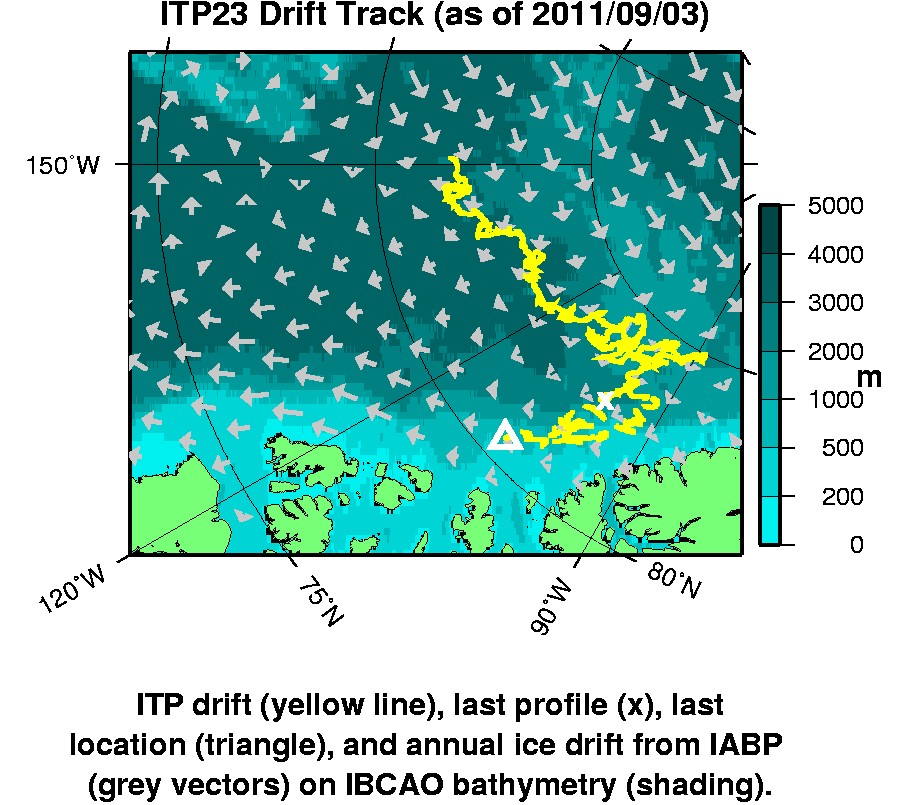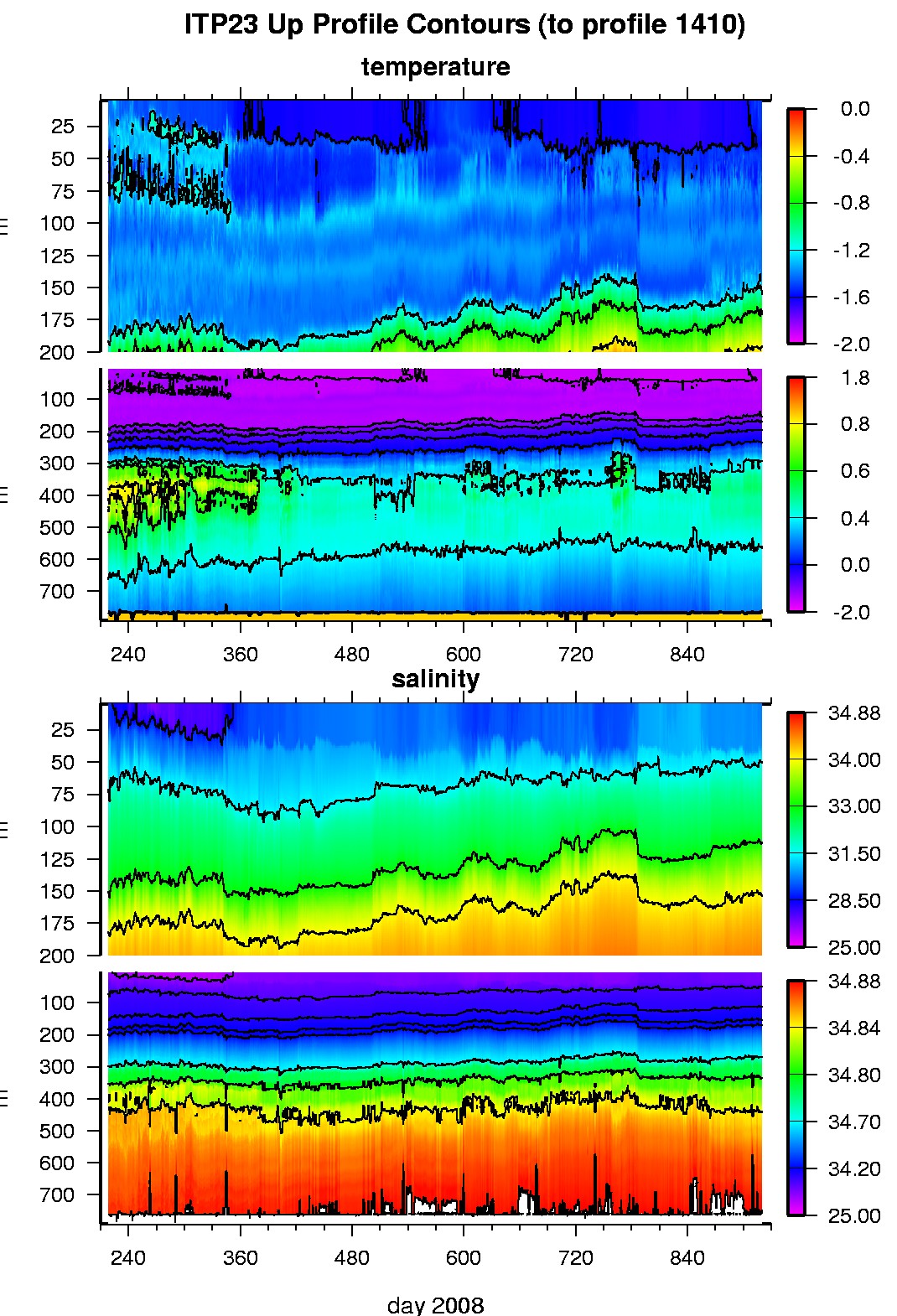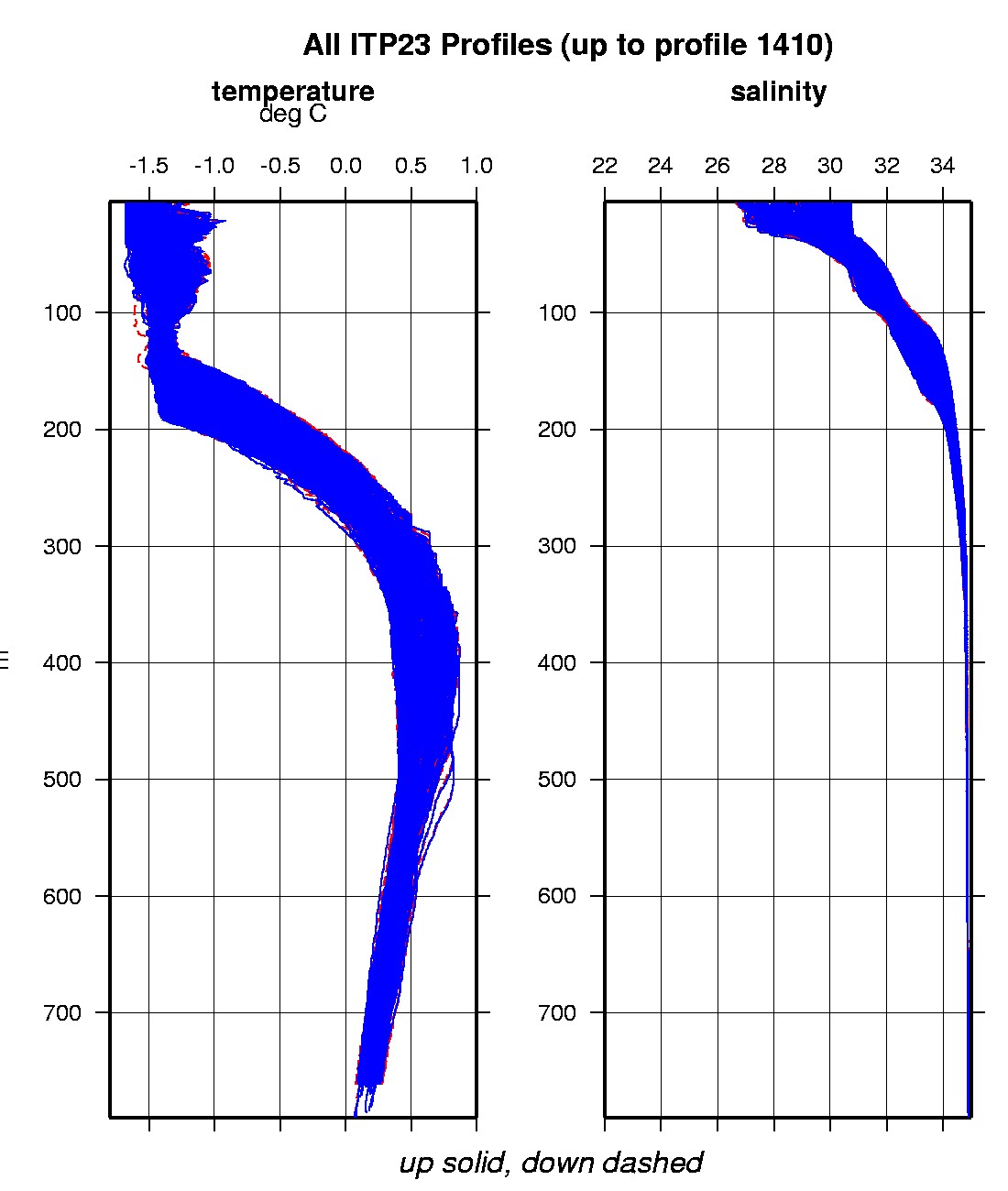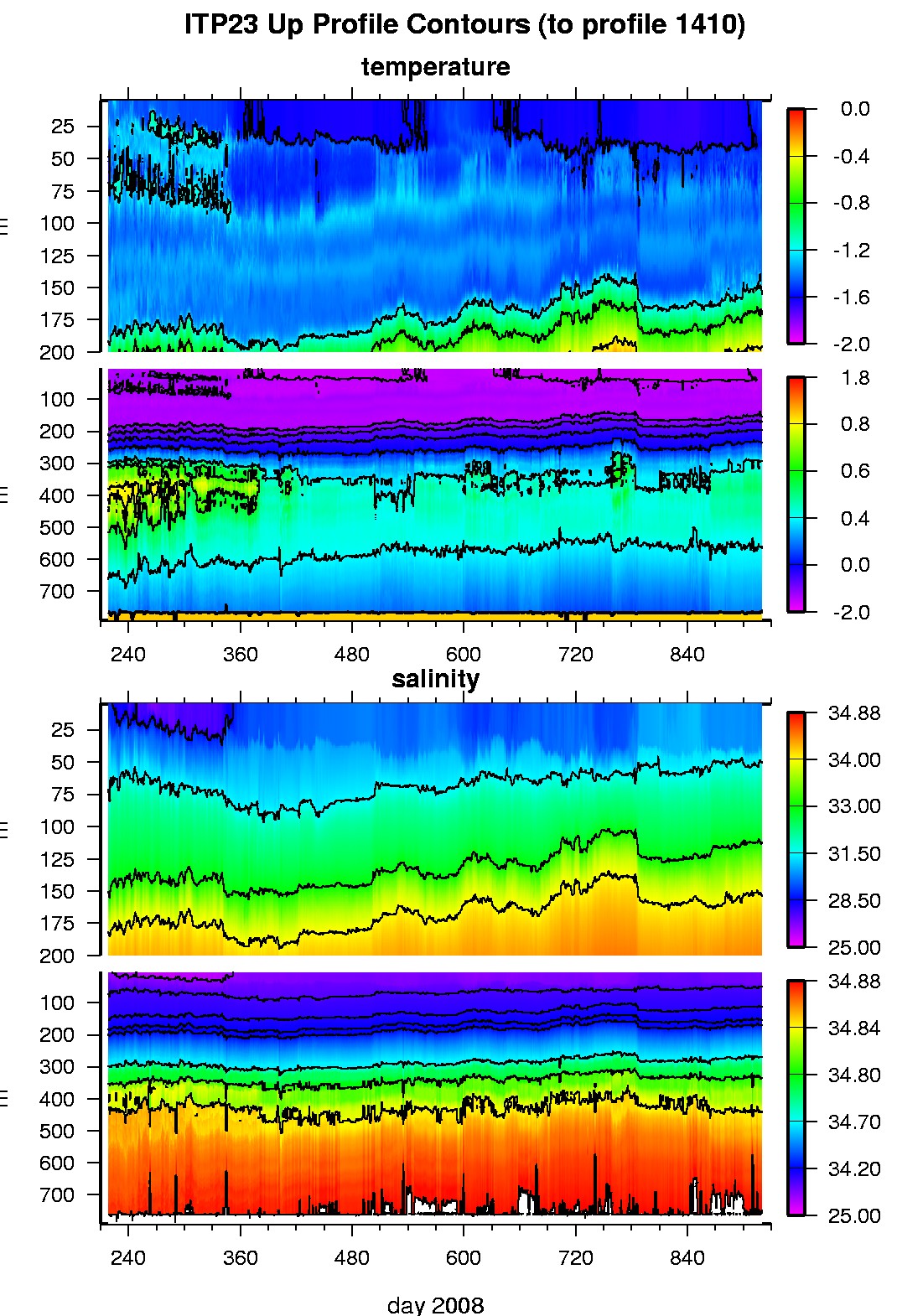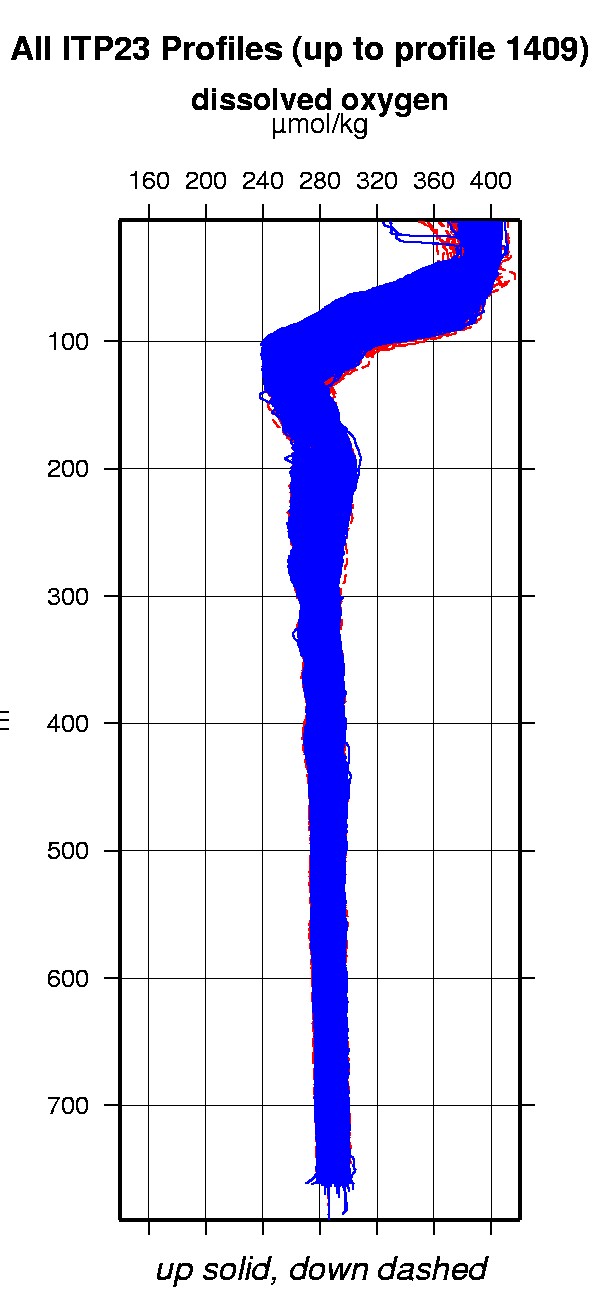ITP23 Data Description
The ITP profiler was configured to operate with a standard sampling schedule of 2 one-way profiles between 7 and 750 m depth each day. In the surface package, the GPS receiver was powered hourly to obtain locations, and buoy temperature and battery voltage status were recorded.
The buoy drifted moderately slowly along the northern perimeter of the Beaufort Gyre toward Ellesmere Island and Greenland towards Fram Strait for the first 18 months of its lifetime, then turned west. Quite unexpectedly, the profiler quit communicating 5 months later as the system was approaching the continental shelf, and the battery voltage of the profiler was still high. At the same time, GPS fixes became intermittent, suggesting that they buoy may have become involved in ice ridging which presumably broke the modem circuit with the underwater unit. Finally, after drifting over 6400 km in 3 full years, the surface packaged ceased communicating while heading towards the northern straits of the Canadian Archipelago.
The plots to the right are of the final, calibrated, edited data (as opposed to the raw data presented on the active instrument pages).
See the Data Products tab to the left for descriptions of the three levels (I, II, III) of data processing and to access all data.
ITP 23 data can also be found at the links below:
Level II hourly buoy location data in ASCII format: itp23rawlocs.dat
Level III 1-Hz processed profile data in MATLAB format: itp23cormat.tar.Z and itp23cormat.zip
Level III 1-db bin-averaged processed profile data in MATLAB format: itp23final.mat
Level III 1-db bin-averaged processed profile data in ASCII format: itp23final.tar.Z and itp23final.zip
